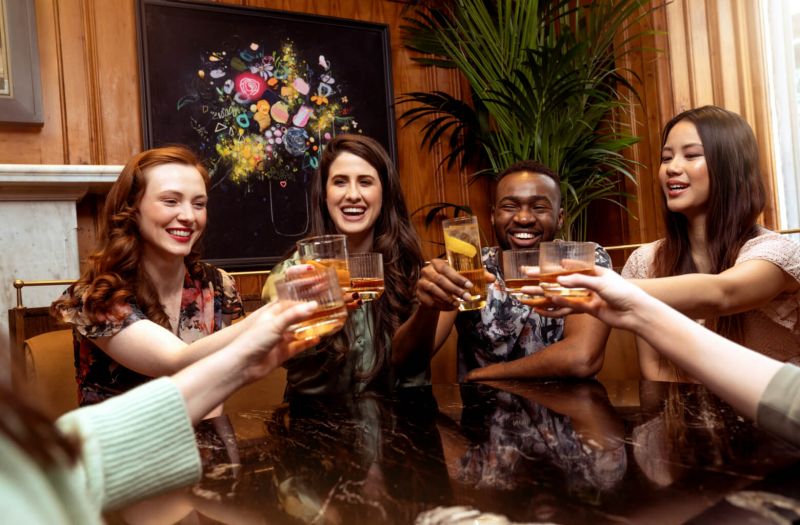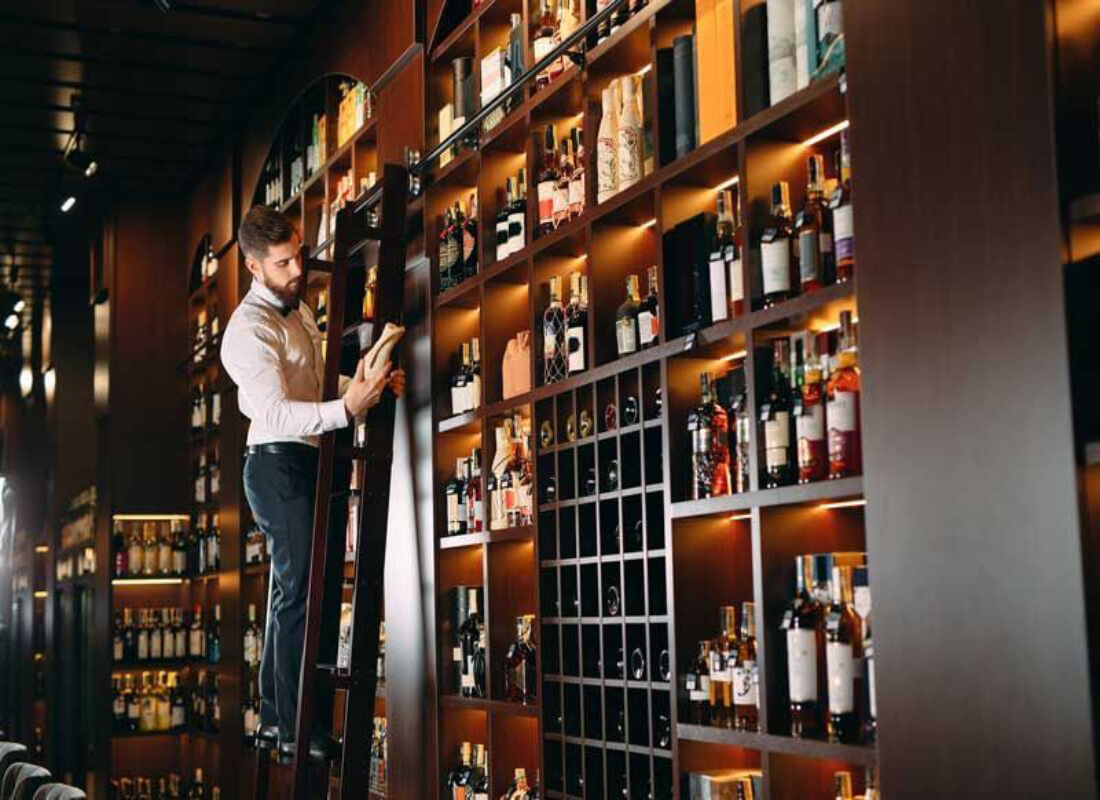Educating Bartenders Worldwide.
By Beverage Trade Network

Premiumization in the U.S. spirits industry has been a major trend over the last decade, driven by a shift in consumer preferences toward higher-quality, more expensive products. This trend has reshaped the industry, creating demand for premium and super premium spirits across a variety of categories, including whiskey, tequila, rum, gin, and vodka. As consumers, particularly Millennials and Gen Z, are increasingly willing to spend more on quality products and unique drinking experiences, the market for premium spirits has grown. But with market saturation, shifting consumer behaviors, and economic factors in play, the key question remains: is premiumization still thriving, or are we nearing its peak? In this analysis, we will examine the state of premiumization in the U.S. spirits industry, exploring factors that continue to drive this trend, potential challenges, and future outlooks.
One of the most defining features of the spirits industry in recent years has been the continued growth in the demand for premium and super-premium products. Consumers are shifting away from mass-produced, lower-quality options in favor of higher-end, artisanal, and craft spirits. This trend is particularly pronounced in categories like whiskey, tequila, and gin, where discerning drinkers are willing to pay more for products that offer higher quality, authenticity, and unique flavors.
In whiskey, for instance, there has been a notable rise in demand for small-batch, single-malt, and aged products. Distilleries have capitalized on this by offering limited-edition releases, rare cask finishes, and unique flavor profiles to appeal to the growing base of connoisseurs. Similarly, in the world of tequila, consumers are increasingly seeking out premium brands, especially those offering 100% agave products with traditional production methods. The “craft spirits” movement has brought about a renewed interest in high-end products that emphasize craftsmanship, heritage, and quality ingredients.
This ongoing demand for premium products reflects a cultural shift in how people view alcohol. For many consumers, drinking has become an experience to be savored rather than simply a means of getting intoxicated. As a result, the focus has shifted from quantity to quality, and consumers are more willing than ever to spend on higher-end products that reflect their tastes and lifestyles. This trend is particularly strong in the premium whiskey, tequila, and gin categories, which have seen substantial growth in both volume and sales value over recent years.

The super premium segment, which includes the highest-end products available in the market, has also seen explosive growth. These are the spirits that are often priced at a significant premium—sometimes several times the cost of a standard bottle. Examples include ultra-aged whiskeys, rare single malts, luxury tequilas, and limited-edition craft liquors.
What is driving the growth of this super-premium segment? A key factor is the increasing number of affluent consumers who view luxury spirits as symbols of status, taste, and exclusivity. As wealth inequality widens and more consumers have disposable income, luxury items like super-premium spirits are becoming more desirable. Consumers in this segment often seek out rare bottles to showcase their discerning taste, making them willing to pay significantly more for a product that is seen as unique, scarce, or prestigious.
Moreover, the appeal of rare and collectible products is fueling the demand for super-premium spirits. Limited editions, special releases, and small-batch offerings have become major selling points for many brands, allowing them to differentiate themselves from the competition and cater to consumers who are looking for exclusive drinking experiences. The rise of online resale platforms and auctions for rare bottles has further amplified this market, making it easier for collectors and enthusiasts to access coveted items.
For example, luxury whiskey brands like Macallan and Pappy Van Winkle are now considered collectors' items, often fetching astronomical prices at auctions. Similarly, tequila brands such as Don Julio 1942 or Clase Azul, with their luxurious packaging and meticulously crafted production methods, continue to attract high-end consumers.
While premiumization remains strong, it's important to acknowledge that consumer preferences are beginning to shift in ways that could limit the extent of future growth in the premium spirits market. First, there is an increasing emphasis on health and wellness, particularly among younger consumers like Millennials and Gen Z. This demographic is more health-conscious than previous generations and is seeking to reduce alcohol consumption or opt for lower-alcohol alternatives.
The rise of low-ABV (alcohol by volume) cocktails, wine spritzers, and other light drinking options shows that younger consumers are not necessarily interested in high-proof, high-price spirits. Instead, they are gravitating toward healthier options, such as organic spirits, low-calorie drinks, or even alcohol-free beverages. This shift in preferences could dampen the growth of premiumization, especially in categories where high-alcohol content is a hallmark of quality.
Additionally, Gen Z is more focused on values like sustainability, transparency, and ethical sourcing when it comes to their purchasing decisions. Many young consumers prefer brands that are environmentally conscious, use organic ingredients, and promote social causes. This means that spirits brands must adapt to these shifting preferences by offering products that align with these values, which could shift the focus from price and exclusivity to sustainability and authenticity.
Another factor that could signal the peak of premiumization in the spirits industry is the saturation of the premium market. As more brands enter the space, it becomes increasingly difficult for new entrants to differentiate themselves and maintain a competitive edge. The market has become flooded with a plethora of premium offerings, with many distilleries producing similar products that appeal to a wide range of consumers.
This saturation, coupled with the increased competition for consumer attention, may make it harder for any single brand to dominate the premium segment. In fact, some industry experts argue that premium spirits could be experiencing diminishing returns due to the sheer number of options available. While premiumization is still an attractive strategy for many brands, its ability to generate strong growth in the future could be limited if consumers become overwhelmed by choices or if the market becomes oversaturated.
To stand out, brands will need to innovate continuously and offer consumers unique experiences that go beyond product quality. Distilleries that focus on craft production methods, exclusive collaborations, or highly personalized offerings will be better positioned to thrive in a saturated market.
Economic factors will also play a significant role in the future of premiumization. While the demand for premium spirits has remained strong, especially in the wake of the COVID-19 pandemic, economic uncertainties such as inflation, rising costs, and changes in consumer spending habits could impact future growth in this space.
As inflation increases and disposable incomes fluctuate, consumers may be more cautious with their spending. Premium spirits are often seen as discretionary purchases, and when budgets are tighter, consumers may opt for more affordable alternatives or scale back their overall spending on alcohol. Furthermore, any economic downturn could see luxury products, including super premium spirits, suffer as consumers tighten their belts.
Despite the challenges that may lie ahead, innovation is key to sustaining premiumization in the U.S. spirits industry. Brands that continue to push the envelope in terms of flavor profiles, packaging, and production techniques are more likely to capture the attention of discerning consumers. For instance, the rise of experimental cask finishes, flavored whiskeys, and new aging techniques is an example of how innovation can reinvigorate interest in premium products.
Furthermore, sustainability practices—such as eco-friendly packaging, reducing the carbon footprint of production, and using local ingredients—can further drive premiumization as younger consumers demand greater responsibility from the brands they support. Distilleries that embrace these practices while maintaining the quality of their products will be better positioned to navigate the future of the industry.
Premiumization in the U.S. spirits industry continues to thrive, particularly in categories like whiskey, tequila, and gin, where demand for high-quality craft products remains strong. The rise of super-premium spirits and limited-edition releases also indicates that there is still significant consumer interest in luxury drinking experiences. However, the trend may be reaching its peak as consumer preferences shift toward health-conscious choices, sustainability, and more affordable alternatives. The industry faces the challenge of market saturation and increasing competition, which could slow the rate of growth. Nevertheless, with continued innovation, brand authenticity, and alignment with shifting consumer values, premiumization can remain an important force in the spirits market—albeit with some adaptation and evolution in the years to come.
Header Image Source: Unsplash
Also Read:
Premium Liquors, Premium Profits: A Strategic Guide To Selling Luxury Spirits
Elevate Your Bar Business With Top Bartender Spirits Awards Picks
Nine Spirits Trends You Can Expect in the 2025 U.S. Drinks Market